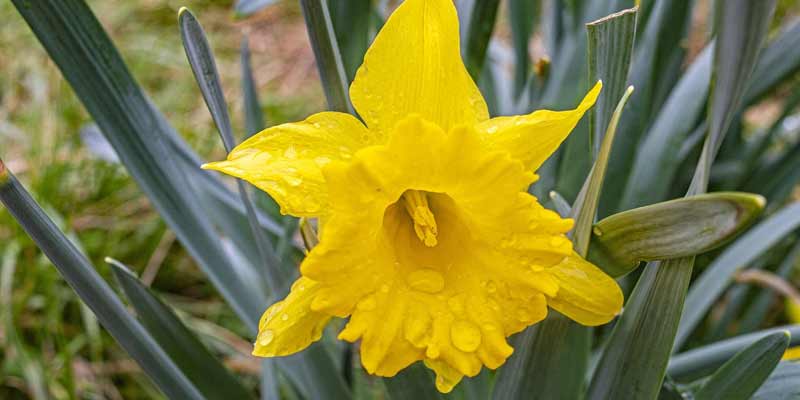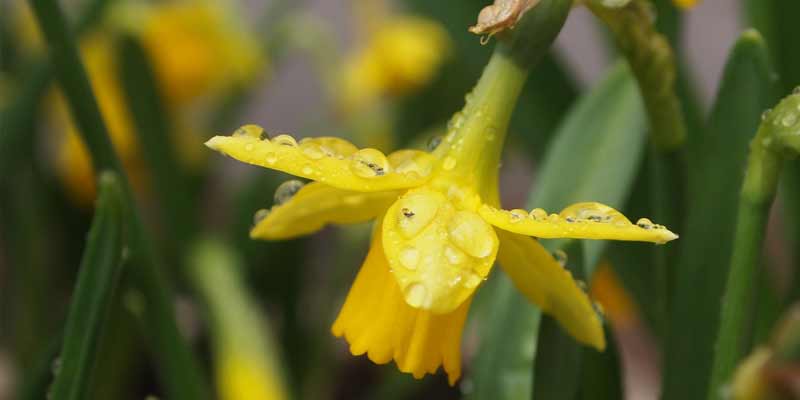With their vibrant blooms and cheerful disposition, daffodils unmistakably herald spring’s arrival: an introduction marked by charming charm. These resilient flowers, a staple in gardens and landscapes, captivate admirers with their effortless beauty; indeed, low maintenance is a hallmark of daffodils. However, to ensure their health and vitality—adequate water provision remains essential for these renowned beauties: they may be hardy but not impervious to dehydration.
This comprehensive guide delves into the nuances of watering daffodils. It offers insights into the ideal frequency to water these beloved springtime blooms, a key factor in promoting optimal growth and flowering.
Understanding Daffodil Watering Needs
Scientifically termed Narcissus, daffodils represent drought-tolerant plants flourishing in well-drained soil. Similar to numerous bulbous flora, these flowers delineate particular water prerequisites; these vary according to factors including soil moisture, atmospheric conditions, and growth stage.
To maintain robust health and foster abundant blooming: comprehending the idiosyncratic watering needs of daffodils is imperative.
3 Factors Influencing Daffodil Watering Frequency
Several factors influence the frequency of watering daffodils:
1. Soil Moisture
During g their active growing season, typically in the spring and early summer, daffodils favor soil with a moderate moisture level. Excessively wet soil can result in bulb rot and fungal diseases.
Conversely, overly dry soil may hinder root growth leading to stunted plants.
2. Weather Conditions
Daffodil watering requirements significantly depend on weather patterns, such as rainfall, humidity levels, and temperature fluctuations.
Daffodils might necessitate more frequent irrigation during hot and dry periods to offset moisture loss via evaporation and transpiration.
3. Growth Stage
Daffodils progress through discernible growth stages, dormancy, emergence, flowering, and foliage maturation; each necessitates varying watering needs.
Particularly during active growth and flowering phases–these stages demand increased hydration to facilitate metabolic processes as well as foster optimal flower development.
Guidelines for Watering Daffodils
To ensure that daffodils receive the appropriate amount of water, consider the following guidelines:
Monitor Soil Moisture
Regularly assess soil moisture levels by inserting your finger into the soil near the base of the daffodil plants; monitor this task with precision. The ideal condition to aim for is moist, yet not waterlogged soil.
Do not let the soil excessively dry between waterings; this condition can stress plants and compromise flower production.
Watering Frequency
Throughout the active growth and flowering phases of spring to early summer, administer deep, thorough watering as necessary for daffodils. Your objective should be to supply sufficient water that moistens the soil’s top layer—approximately 6-8 inches—and ensures adequate moisture penetrates their root zone.
Watering Methods
To minimize the moisture on daffodil foliage and decrease the risk of fungal diseases, water should be directed at the base of these plants instead of overhead.
Employ a gentle technique for watering such as using either a soaker hose or drip irrigation system that would allow direct delivery to their root zone without causing soil splashes onto its leaves and flowers.
Rainfall Considerations
Consider natural rainfall when determining the need for supplemental watering; specifically, in regions with regular precipitation: daffodils may demand less frequent hydration.
However, in arid climates or during dry spells, it becomes imperative to provide additional irrigation to sustain soil moisture levels.
Mulch
Apply a layer of organic mulch, shredded bark, straw, or compost around daffodil plants; this aids in conserving soil moisture, suppressing weed growth, and regulating soil temperature.
Furthermore, the process of mulching prevents moisture loss via evaporation and reduces the necessary frequency for watering–a significant advantage.
Signs of Overwatering and Underwatering
It’s important to be vigilant for signs of overwatering and underwatering in daffodils:
Overwatering
Overwatering manifests through symptoms such as soil saturation; foliage that turns yellow; wilting of the plant, and bulbs becoming mushy or rotting.
Daffodils, when overwatered, become vulnerable to root-rot and fungal diseases, conditions that may ultimately result in their decline and death.
Underwatering
Underwatering may cause daffodils to present with wilted foliage, drooping flowers, and browning leaf tips; the leaves might also manifest a yellow or scorched appearance – suggestive of moisture stress and dehydration.
Underwatered daffodils may enter dormancy prematurely and fail to produce vigorous blooms.
Conclusion
To foster healthy, robust daffodil plants that reward with a spectacular springtime bloom, one must master the delicate balance of watering, an endeavor demanding attentiveness to soil moisture; weather conditions; and plant growth stages. Understanding factors influencing daffodil irrigation needs, and following best practices for it is key.
In garden borders or naturalized meadows—if showcased in containers even—daffodils thrive when provided with appropriate water and care. Nurture nature’s sunshine and celebrate the beauty of daffodils in your garden landscape with unabashed joy.



Leave a Reply